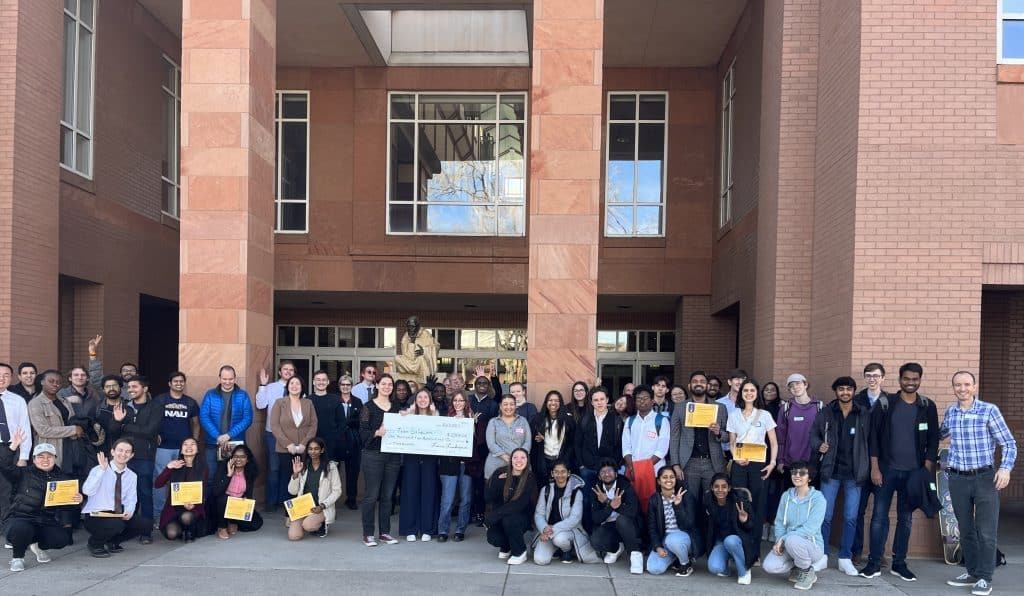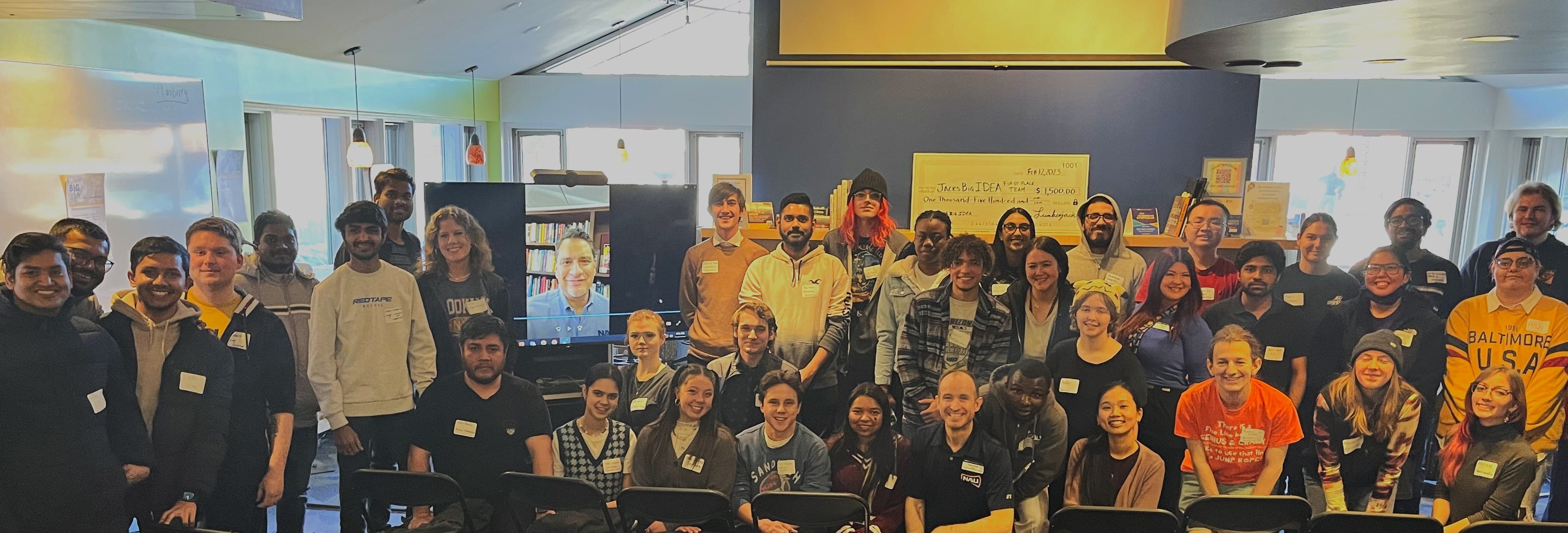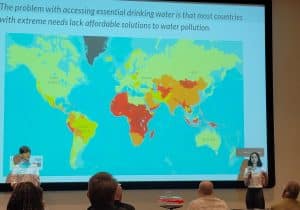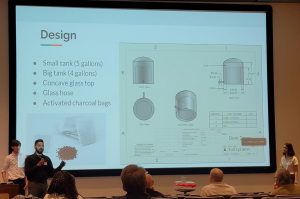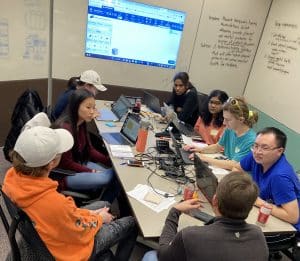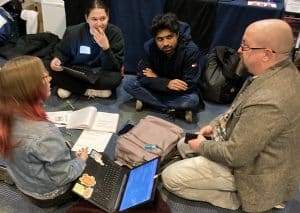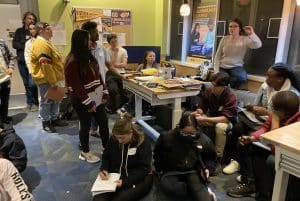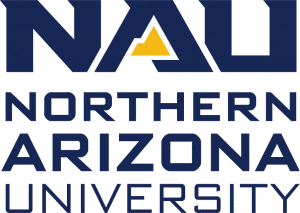NAU’s third annual Jacks Big IDEA competition took place earlier this month, bringing together students from a variety of majors and backgrounds to collaborate on creating innovative solutions to real-world problems like food waste and water scarcity. The three-day event challenged teams to develop a solution and prototype, then present their solutions to a panel of judges. The competition not only fostered creativity and problem-solving skills but also allowed students to network and build teamwork and leadership abilities, as well as win monetary prizes.
Curtis Smith, director of the Boundaryless Innovation & Entrepreneurship Center, oversees the Jacks Big IDEA competition, encouraging continued student participation growth and campuswide engagement.
“I hope that this weekend gives you the confidence and skills to take the risk and make a positive impact on society and the world. That’s the real big idea and purpose of Jacks Big IDEA,” Smith said.
The competition fits into NAU’s larger initiatives and programs and its efforts to support innovation and entrepreneurship by enhancing the university’s ability to deliver on its call to become a national leader in creating opportunities, driving economic mobility and social impact through equitable postsecondary education. It was no surprise then that President José Luis Cruz Rivera, an engineer who is passionate about innovation, opened the weekend with words of encouragement.
“I’ve had a chance to look at the needs statements, and I’m so excited about the solutions you will put forth to meet the demands—not only of the projects but also in terms of what you’ll be learning as you work together in teams to advance solutions that have social impact,” he said.
Over the course of three days, more than 50 students created 11 teams and worked tirelessly to develop their ideas into a product or prototype that could potentially change the world. The competition kicked off on Friday evening when teams were formed and given their challenge prompt. They had until Sunday evening to finalize their product and prepare a presentation to pitch to a panel of judges.
“Competitions like this are important because they challenge students to think outside the box and come up with innovative solutions to real-world problems,” Smith said. “These skills are essential for success in any career path.”
Starting with a big idea
Many teams tackled waste, focusing on food waste while another team looked at waste in the textile industry. One team tackled 3D mapping in disasters, and others focused on temporary housing structures during emergencies, including Team Unity, which took third place. The second-place team, Dew Drop, focused on the lack of clean water in countries like Nigeria and created a prototype for a low-cost water purifier. The winning team, SafeCom, developed a way to communicate after a disaster like the recent earthquake in Turkey. These disasters decimate infrastructure, including Wi-Fi and cellular service, making it virtually impossible to communicate for help and extraction.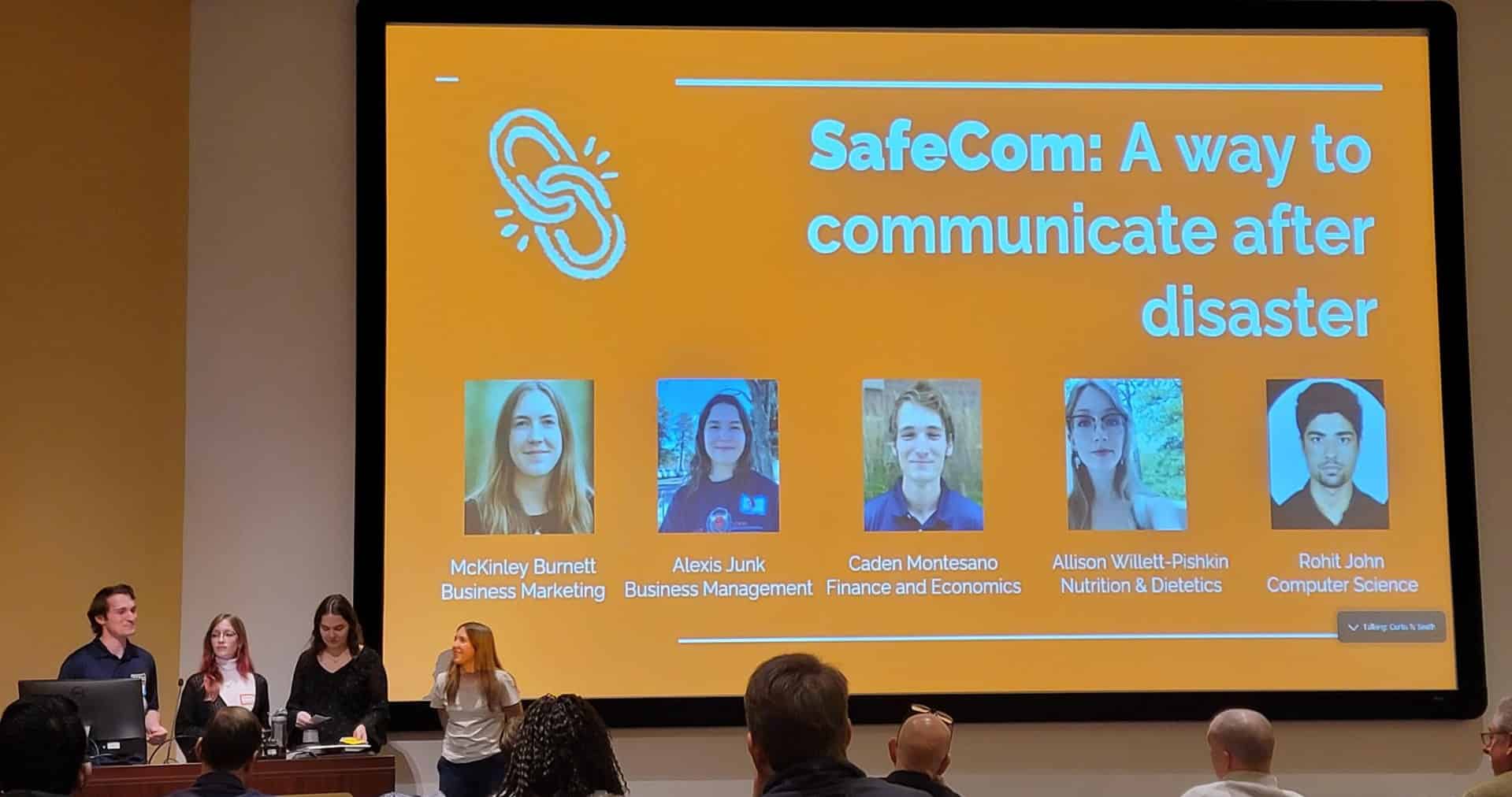
- Turn on the case and confirm volume toggle is on.
- Press power once and wait for the beep to record a 15-second message, making sure to include your name and current situation.
- Two beeps will confirm your message was sent, and the GPS will emit frequency sounds and ping your location every hour.
- Turn off the frequency sound once rescued by switching the toggle switch to off.
Team SafeCom included Rohit John, Alexis Junk, McKinley Burnett, Caden Montesano and Allison Willett-Pishkin. This project hit close to home for several members, who noted during their presentation that they’d been affected by significant natural disasters like earthquakes and hurricanes in their hometowns of Alaska and South Carolina.
“If I knew they had that resource, I would be so reassured even when I’m here in Flagstaff because I was not able to get in contact with anyone right away,” Burnett said.
“We were stuck, and we eventually lost power. We didn’t know if we could evacuate. I was scared. My family was scared, but I know if I had SafeCom, and so did my family members, I would have felt so much safer and more reassured,” Junk said.
Building a big idea
Teams had to work together to develop a prototype, which meant collaborating across different disciplines and skill sets. During their presentation, SafeCom highlighted what a challenge this project was for their team.
“Our team consisted of three business majors, one nutrition major and one computer science major,” Montesano said.
During their three short days, the team completed a successful crash course in technology, manufacturing, deployment and marketing to make their project successful. Their presentation included a detailed cost breakdown for each component necessary for their device. Their prototype’s total cost came in at only $65; with a wholesale manufacturing deal, the team noted they could acquire the necessary parts and make the device for substantially less than this projection.
“We wanted to create something that would make people feel safer and more connected to the resources available to them,” Montesano said.
The hard work and dedication paid off for Team SafeCom, who took home the grand prize and now will compete against schools worldwide at Texas A&M for a grand prize of $5,000. “It felt great to win the competition! Our team got really dialed in and our presentation went extremely well,” Montesano said.
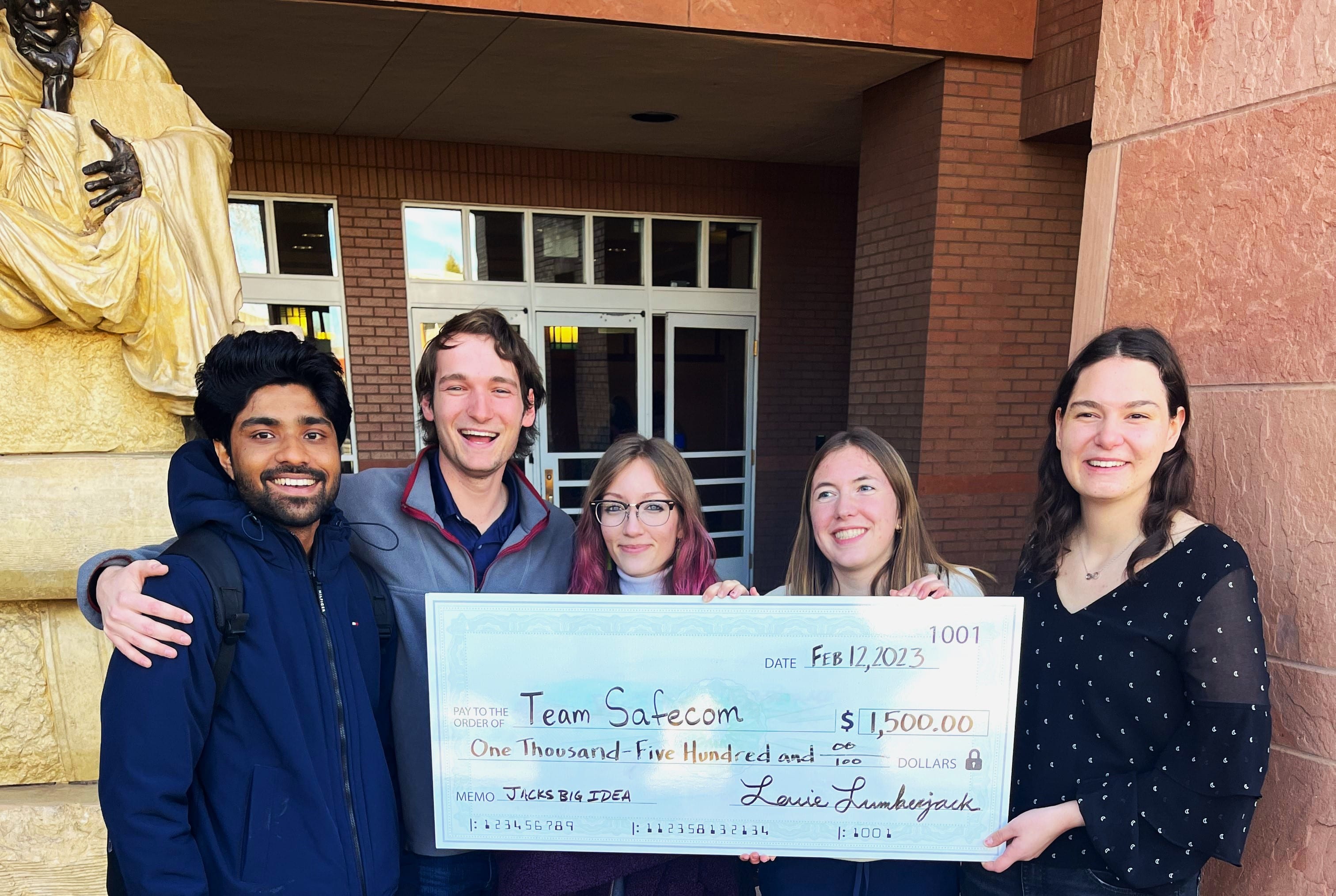
Second-place winners Team Dew Drop tackled the issue of water scarcity and contamination. The team focused their efforts on Nigeria as contaminated water is a pressing issue, noting the land’s landscape, shoreline and sunlight would feed into the success of their project. Within 48 hours, Team Dew Drop created a solution, prototypes of three different water-purifying inventions and presented their work. All of their prototypes worked, but that last one was especially effective. Team Dew Drop also faced challenges when two members dropped out, leaving them with a team of three; Zoé Darshan, a criminology and criminal justice major, Jay-Laljibhai Khunt, a mechanical engineering major, and Dimitrius Bozhor, an accounting and management major, became the smallest group in the competition. Still, the members of the small team played to their strengths. “We had a strategy where the tasks were distributed according to the strengths. For example, I was brainstorming for the designs, Dimitrius was looking up the costs and logistics and where we could find the materials for our product at the lowest cost and Zoe was researching the base problem surrounding water, contamination, and Nigeria specifics,” Khunt said.
Darshan led the presentation by setting up the geopolitical and environmental landscape of Nigeria as well as the hard truths surrounding water scarcity and contamination. The team was composed, prepared, knowledgeable, and showcased their working prototypes. “Preparing a project with three members was definitely a challenge, and we struggled a lot,” Darshan said. “Learning to cooperate and communicate with a team is not simple, but it made me grow a lot this weekend.” They gave no indication their team size had been a struggle, and despite the setbacks, they pushed through and took home second place.
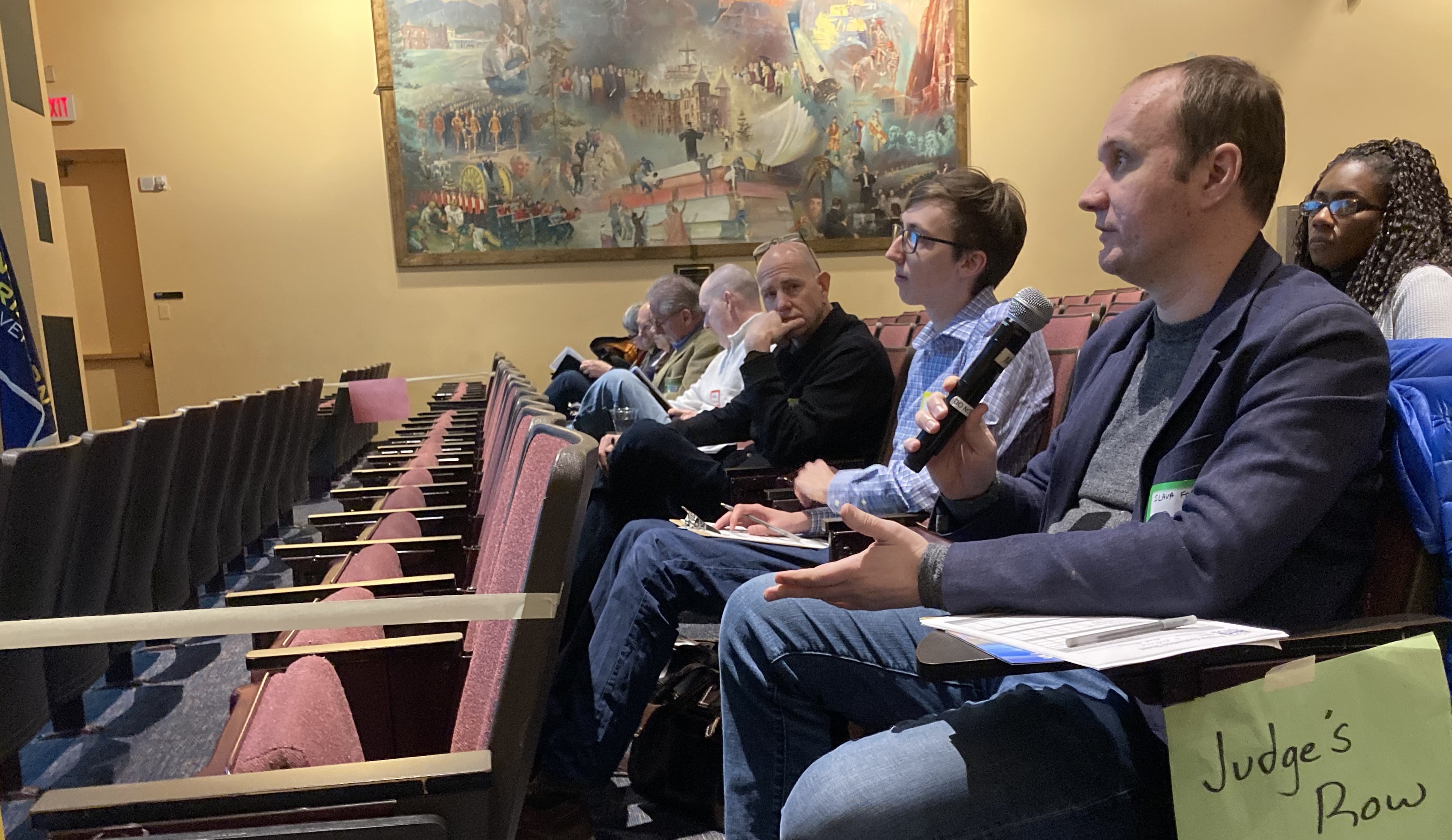
The competition had a panel of judges representing every NAU college and local partners. The judges’ expertise ranged from bioinformatics, pathogen detection and transmission, technology integration to business development, public health and aerospace engineering. The judges included Viacheslav (Slava) Fofanov, an associate professor and director of the School of Informatics, Computing, and Cyber Systems; Shadow Armfeld, chair of the Department of Educational Specialties; Yimin Wang, vice provost for global affairs and a faculty member in the Department of Educational Leadership; Chris Boyer, dean of the College of Arts and Letters and professor of history; Diana White, executive director of the Moonshot at NACET Flagstaff campus; Lillian Smith, dean and professor in the College of Health and Human Services; Kevin Gustafson, dean of the Honors College and associate professor of English; Roger Haro, dean of the College of Environment, Forestry and Natural Sciences; William Aylor, associate vice president for research and innovation; and Andrew Sabovik, an engineer at Katalyst Space Technologies.
Mentors from throughout NAU and the broader Flagstaff community provided outside perspectives and industry expertise to the teams, including Cody Hartman, innovation associate at W.L. Gore & Associates; David Van Ness, professor of new media in the College of Arts and Letters; and Kate Carroll, mechanical engineering professor in the College of Engineering, Informatics, and Applied Sciences.
“This is so fun—there’s so much energy in the room and great ideas,” Carroll said.
Support for Jacks Big IDEA came from many campus partners. The monetary prizes were funded by the generosity of two donors for The W.A. Franke College of Business; further support came from the CULT Artisan Beverage Co. and the School of Hotel and Restaurant Management. The American Society of Mechanical Engineers got involved as instructors at the kickoff, and the NAU Kayettes were the lead volunteer organization all weekend.
For many of the participants, the experience of collaborating with peers from different backgrounds, learning from mentors and working on a real-world problem was the real reward. “Winning is definitely great, but apart from the prize, we also won so much knowledge and experience in such a short period of time,” Darshan said.
“I was able to meet so many new people, build lifelong friendships and solve a real-world problem!” Montesano said. “This event has been a huge success and it is something I will always remember looking back at my college career.”
Want to be a part of Jacks Big IDEA next year? You can contact the Boundaryless program (boundaryless@nau.edu); they’re already making Big Plans for Spring 2024.
Cynthia Gerber | NAU Communications
(928) 523-7341 | Cynthia.Gerber@nau.edu
